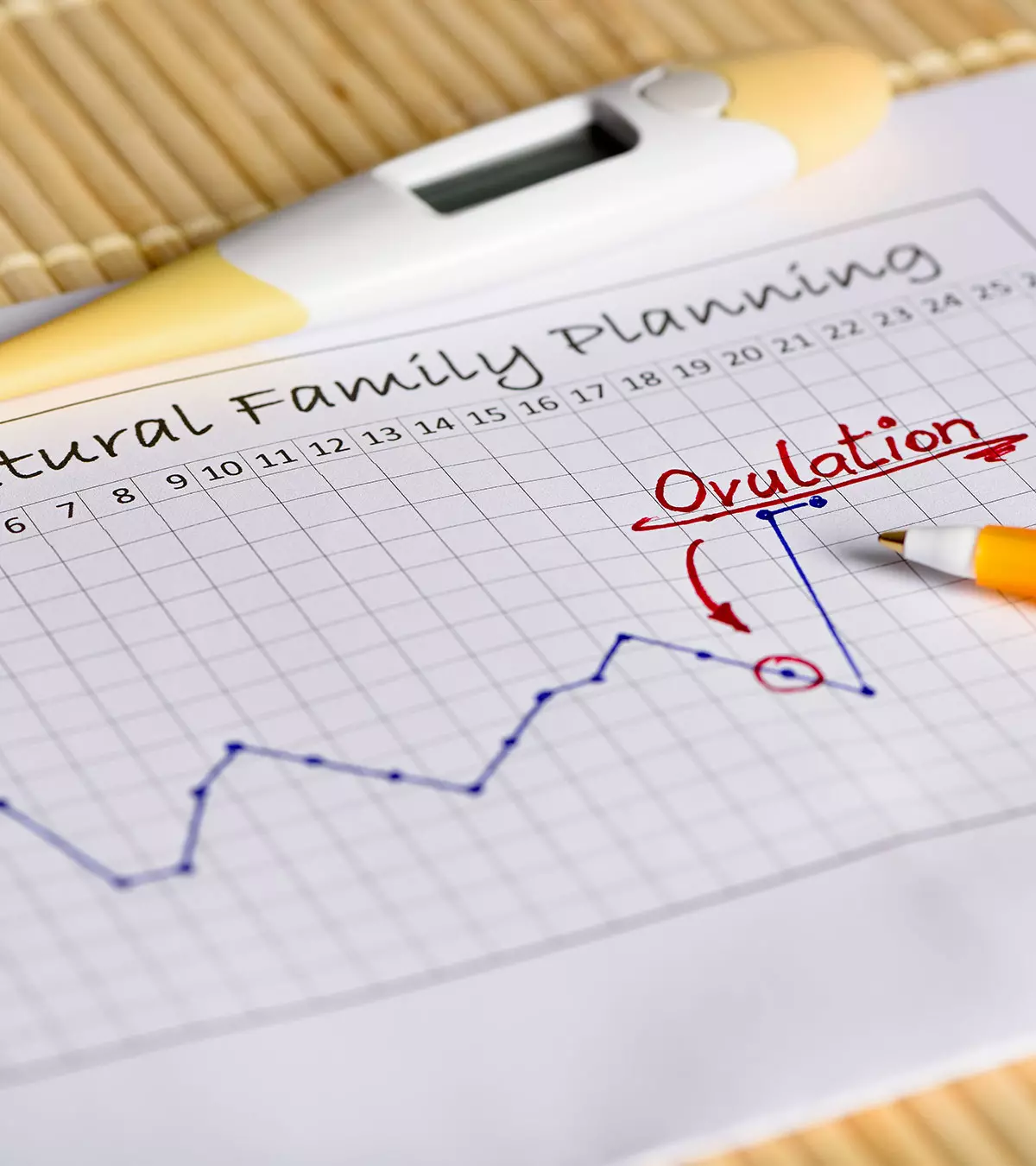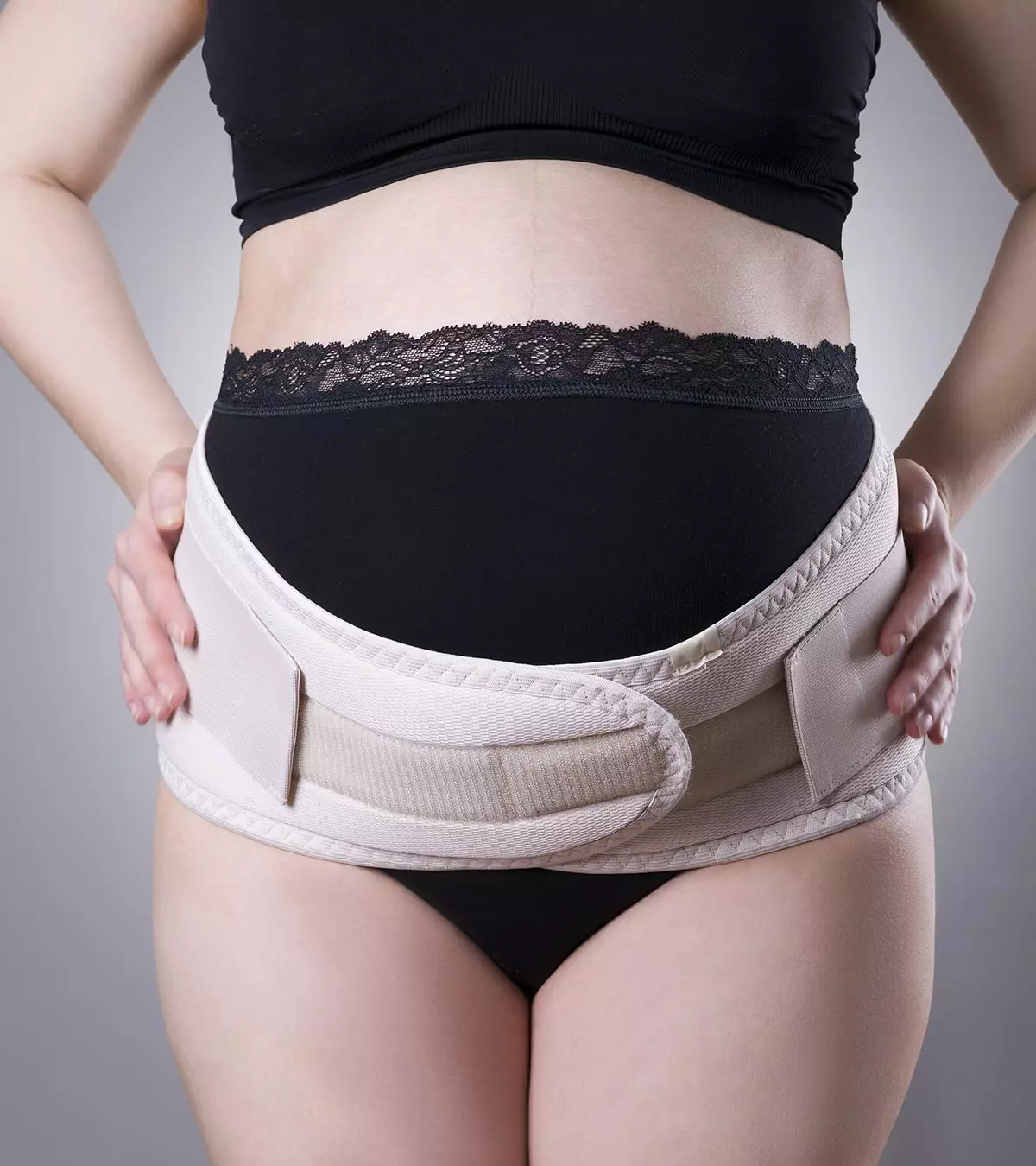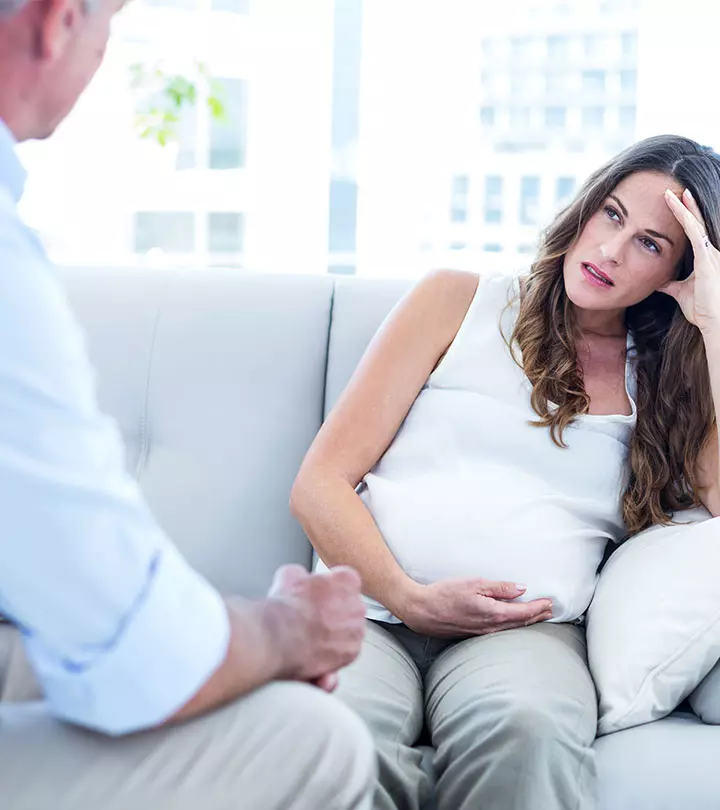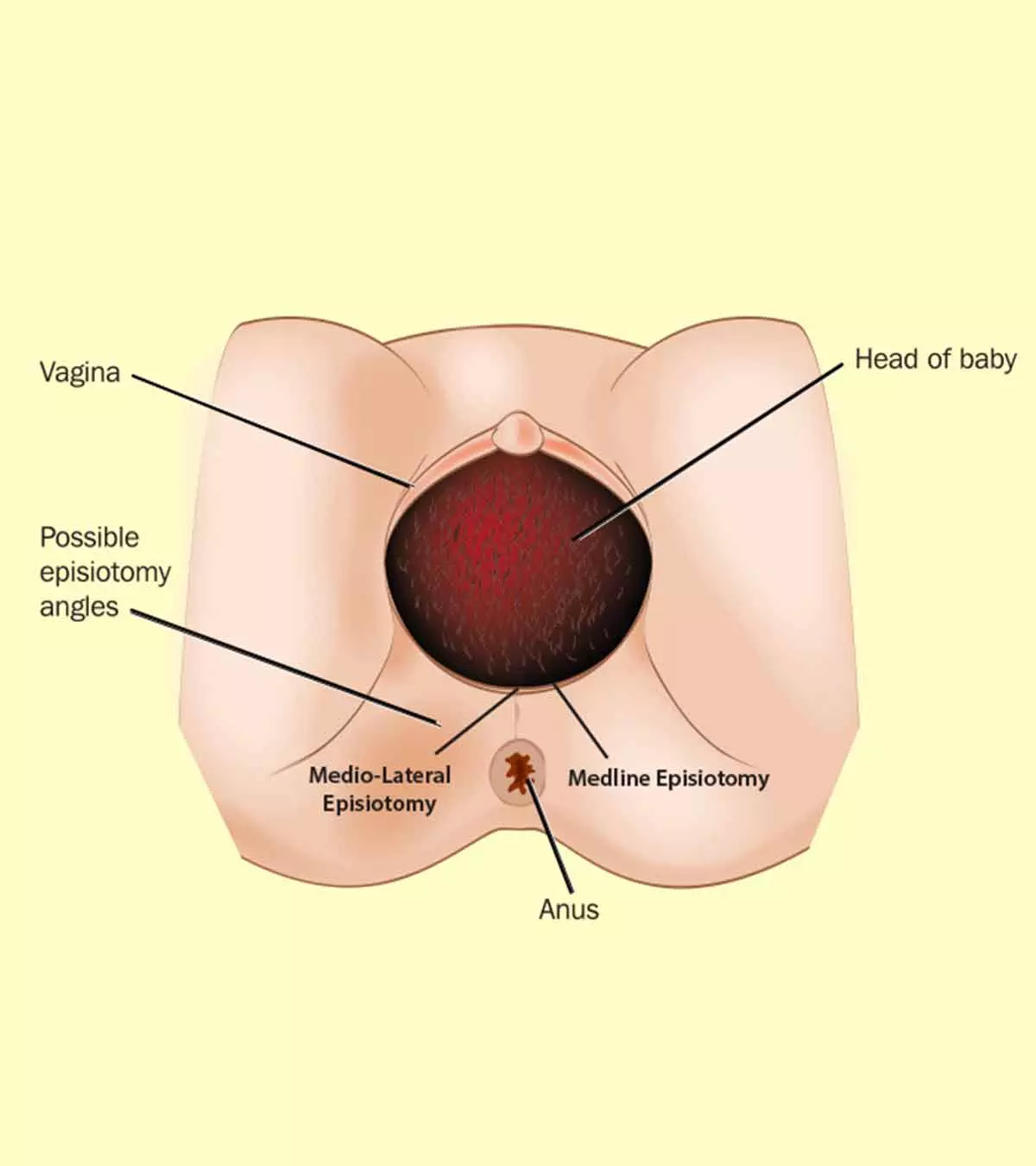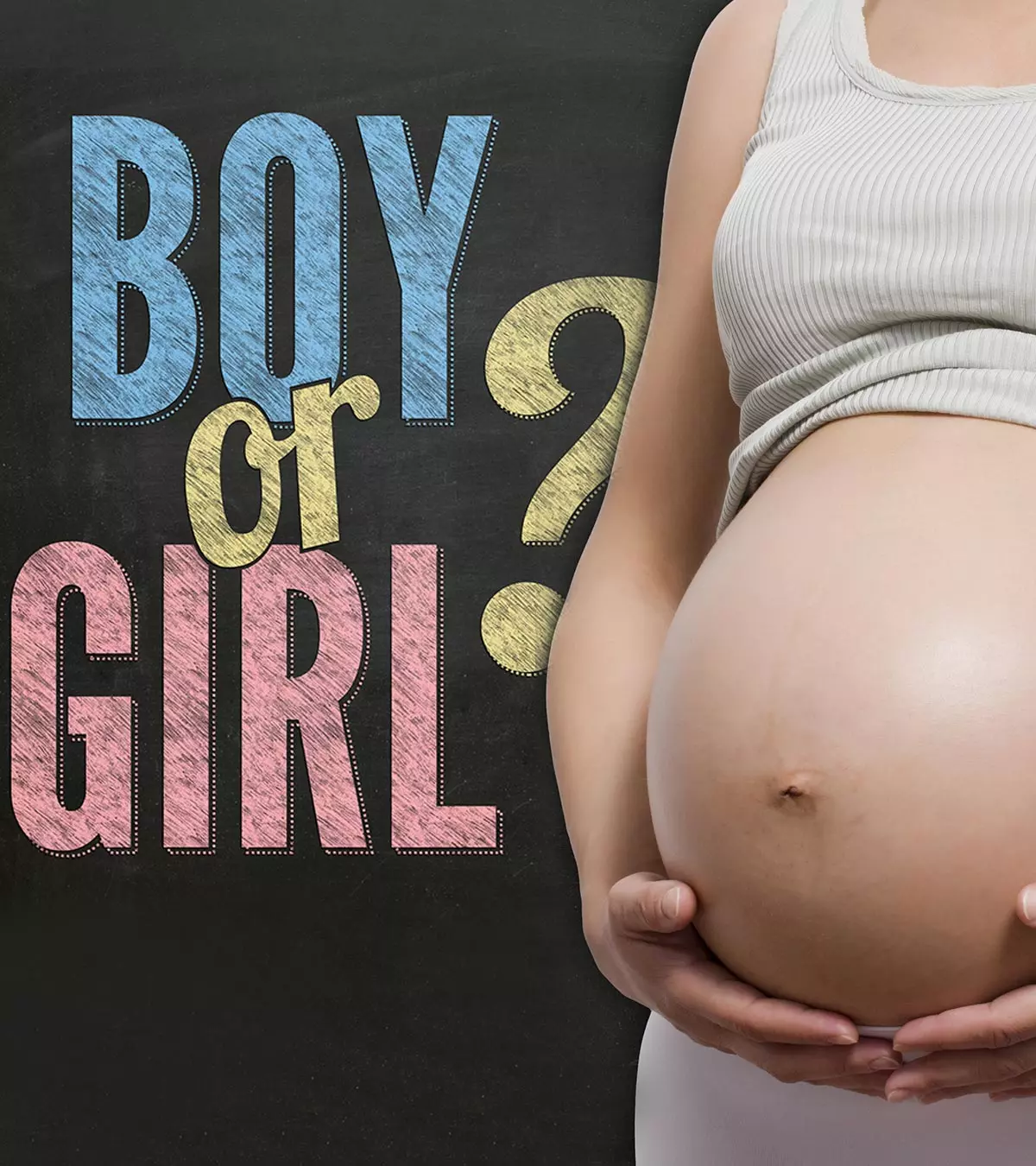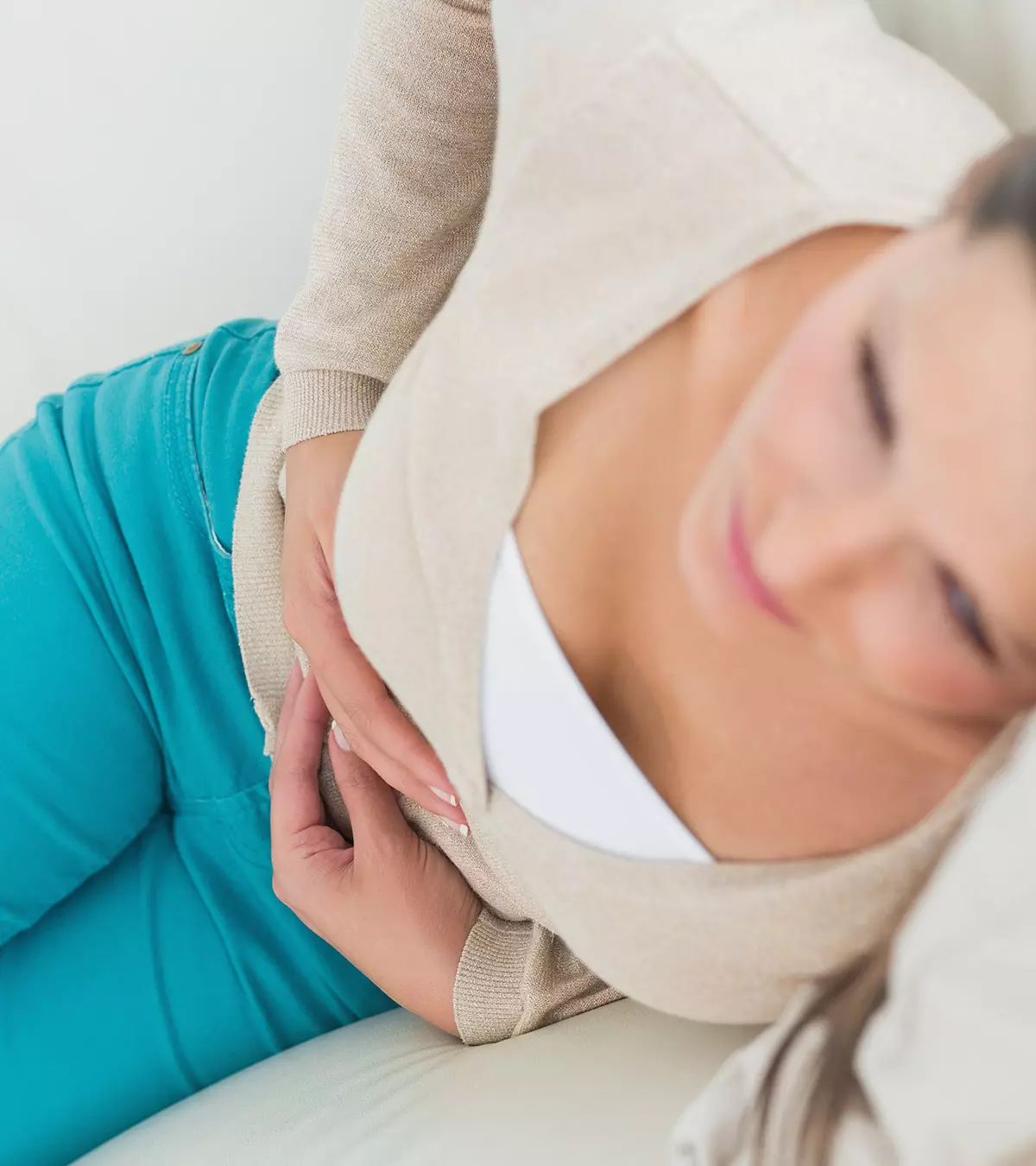

Image: Shutterstock
Abdominal or pelvic cramping is a classic sign of the menstrual cycle in females, which can occur before (premenstrual syndrome or PMS) or during periods. However, this is not always the case, as there are many cases where you may experience abdominal cramping without a period. Continue reading this post to learn more about pelvic or abdominal cramps without periods, why it feels like PMS symptoms, and how it affects your reproductive health.

Do Non-Menstrual Cramps Indicate Pregnancy?
The onset of pregnancy could be one of the reasons for cramping but it need not be the only reason. You may experience mild cramps when the baby implants in the uterus around the fourth week of pregnancy (the time you would get your period). Therefore, you can take a home pregnancy test when you have cramps without your due date of period to confirm pregnancy (1).
Besides pregnancy, there are several other causes of cramping. Here are some of them.
1. Ovulation
Ovulation is the period when the ovaries release an egg, which usually happens around the 10th to the 14th day of the menstrual cycle. The lower abdominal pain during ovulation is medically termed as Mittelschmerz.
In this case, you will experience a sharp, or sometimes a dull pain on one side of the lower belly. It lasts between a few minutes to a couple of hours. The pain depends on which side of the ovary releases the egg and might strike at the same place. It may switch the sides each month (2).
2. Inflammatory bowel disease (ulcerative colitis or Crohn’s disease)
It is an autoimmune condition affecting different parts of the gut, causing chronic swelling and inflammation. It can be ulcerative colitis that infects only the colon (large intestine), or Crohn’s that affects any part of the gut (which includes your mouth too).
You may experience severe cramping pain and irritation in the abdomen. It usually occurs after eating certain foods (such as spices, caffeine, and milk), but may also occur without any cause (3).
3. Ruptured functional ovarian cyst
Ovarian cysts are fluid-filled sacs or pockets in an ovary or on its surface. Usually, the follicular cyst breaks to release the egg, which dissipates on its own during periods. In some cases, it does not dissolve and ends up as benign ovarian cysts or functional cysts.
Though a ruptured cyst does not always cause pain, sometimes leads to sharp and sudden pain on the lower abdomen (4).
4. Ectopic pregnancy
Here the baby grows outside the uterus, in one of the fallopian tubes or anywhere in the abdomen. It is lethal to the mother, and will not yield in a live birth. Home pregnancy test is usually positive if history of missed periods. You will experience mild cramping followed by a sharp and stabbing pain on one side of the abdomen.You might also get dizziness, fainting attack along with some blood spotting. The pain will become intense and can travel to the lower back and shoulder as well (5). You must consult your doctor immediately.
5. Miscarriage
It is the loss of the unborn baby within the 20th week of pregnancy. Most miscarriages happen before the 12th week and are mainly due to chromosomal or genetic abnormalities and many more causes. You will experience period-like cramping that can turn severe along with bleeding (6).
6. Pelvic inflammatory disease (PID)
The bacterial infection usually spreads through sex and affects the reproductive organs including the womb, fallopian tubes, ovaries, cervix, and vagina. You may experience mild cramping on both the sides of the lower abdomen and lower back, which can manifest any time. The pain may become intense and constant in severe diseases (7).
7. Endometriosis
It is a chronic condition where the endometrial tissue also grows outside the uterus and inside any part of the abdomen. You may experience regular menstrual-like cramps that may develop any time of the month but mostly associated with menstrual cycle. These cramps can develop in different parts of the abdomen, sometimes radiating to the legs or back. There might be severe pain during bowel movements too (8).
8. Pelvic floor muscle dysfunction
The condition involves severe spasms in the muscles supporting the womb, vagina, bladder, and rectum. It may be a result of physical exercises, prior orthopedic injuries, sex, and chronic constipation. You will experience pain in the lower abdomen or in the sitting bones,which is mostly associated with pain in the back and the groin (9).
9. Irritable bowel syndrome
It is a functional gastrointestinal disorder associated with cramping, bloating, constipation, diarrhea, and abdominal pain. It is diagnosed if present for at least three months. You will feel a sudden flash of cramps in your abdomen that might improve after a bowel movement, or experience very frequent bowel movements causing loose stools. The pain worsens during your menstrual period (10).
10. Interstitial cystitis and UTIs
This condition affects your bladder, and is also called painful bladder syndrome. Though the exact cause is unknown, it is known to occur due to a defect in the epithelial tissue of the bladder. You will experience lower abdominal cramps along with pain and tenderness in the genitals. It gets severe when the bladder gets full, or during the period (11).
Urinary tract infections (UTIs) are an infection in any part of the urinary system, the kidneys, bladder or urinary passage. The common problem in females may cause pelvic pain, in addition to other symptoms such as increased frequency of urination.
11. Appendicitis
It is an inflammatory condition of the vestigial organ called appendix, a pouch protruding from your large intestine. Cramps originate in the navel and move into the lower right side of the belly. It can be associated with nausea, vomiting, or fever. Pain sometimes worsens as you move, cough, sneeze and also jolt you out of deep sleep (12).
12. Ovarian cancer
Though rare, this could be one of the reasons for cramps without periods. It begins in the ovaries that are responsible for producing eggs for fertilization. There is a vague pain, which you might take for gas or constipation. The pressure and pain in the lower abdomen will not subside easily (13).
13. Perimenopause
Perimenopause is a transition from reproductive state to menopause, when the ovaries stop releasing eggs and you can no longer have biological children.
Perimenopause can begin in women aged between 35 and 59. Cramps during this period are similar to menstrual cramps and may become severe due to fluctuations in hormones (14).
14. Premenstrual syndrome
Most women suffer from PMS around seven to 14 days before they get their periods. It is usually caused by a combination of physiological and psychological factors and leaves you irritable with specific food cravings.
You experience cramps in the lower abdomen, usually before the period every month (15). It is usually relieved once periods start.
15. Stress
Stress-inducing events such as exams, trauma, or even breakups would make periods go awry. Improper sleep, headaches, over thinking, anxiety or depression could also lead to stress.
You will experience cramps in the abdominal area and also in the thigh, foot, and calf regions (16).
Tips To Relieve Cramping Pain When Not On Periods
The following measures could help alleviate the pain associated with cramps that are not due to periods or pregnancy.
- Find a comfy couch or bed to lie down in a position you feel most comfortable.
- Apply hot compresses on the area where you feel severe cramping.
- Take a warm water bath to relax the muscles and remove stress.
- Consider walking in your garden or neighborhood park, and it can help you relax and be comfortable.
- Consume a warm cup of water with lemon, or make some herbal tea for a soothing effect.
- Rubbing the affected area gently also helps to relieve the pain.
You might try the above measures to ease the cramps. If they don’t help, it is time to check with your doctor.
Frequently Asked Questions
1. What is the difference between pregnancy cramping and menstrual cramping?
The nature and intensity of cramping during pregnancy and menstrual period are similar, but their timing is different.
Menstrual cramping, also referred to as primary dysmenorrhea, occurs a week or two before your period, and decreases as your period starts. These cramps disappear by the end of the period (17).
Pregnancy cramping will initially develop during the implantation period, and lasts for weeks to months during pregnancy. It occurs on and off (18).>
2. What does it mean if I experience cramping 10-14 days before my period?
Cramps around ten days before your period could be because of ovulation when the ovaries produce eggs. Another reason could be implantation when the egg and sperm fertilize and the embryo attaches to the uterine lining, indicating pregnancy.
3. Can the early days of pregnancy have period-like cramps?
During the early days of pregnancy, you will experience mild tummy cramps that you usually feel during your period. They occur due to the physical and hormonal changes your body undergoes to accommodate the growing baby.
A missed period or cramping without a period could be signs of conception in some women. However, in others, it could indicate an underlying medical condition, including but not limited to IBD, ectopic pregnancy, endometriosis, and ovarian cancer. Hence, you may take a home pregnancy test to confirm your pregnancy. If your test is negative and your cramps persist, seek medical advice. Ensure you note down and discuss the intensity, timing, and duration of your cramps to help your healthcare provider identify the cause and suggest an appropriate treatment intervention.
References
1. Pregnancy, Delivery, and Lactation; The University of Notre Dame
2. Mittelschmerz (Painful Ovulation); SexInfo Online; University of California (2018)
3. Inflammatory bowel disease; Sutter Health Palo Alto Medical Foundation
4. Treating a Ruptured Ovarian Cyst; UC San Diego Health (2018)
5. Complications of Pregnancy; The Children’s Hospital of Philadelphia (2018)
6. K.J. Sapra et al.; Signs and symptoms associated with early pregnancy loss: findings from a population-based preconception cohort; Hum Reprod (2016)
7. Pelvic Inflammatory Disease; Chicana and Chicano Studies (2005)
8. Endometriosis; Rush University Medical Center
9. Stephanie S. Faubion et al.; Recognition and Management of Non-relaxing Pelvic Floor Dysfunction; Mayo Clin Proc (2012)
10. Irritable bowel syndrome; U.S. Department of Health and Human Services (2018)
11. Diagnosing and treating interstitial cystitis; Harvard Health Publishing (2018)
12. Appendectomy; University of Rochester Medical Center (2018)
13. Ovarian Cancer Report; Georgia Department of Community Health
14. What Is Menopause; National Institutes of Health (2017)
15. Premenstrual Syndrome; Brown University Health Services (2013)
16. Prior stress could worsen premenstrual symptoms, NIH study finds; National Institutes of Health (2010)
17. Menstrual Cramps; The University Of Texas At Austin University Health Services (2018)
18. Pregnancy: Signs, Symptoms and Health; Regis College, Massachusetts
Community Experiences
Join the conversation and become a part of our nurturing community! Share your stories, experiences, and insights to connect with fellow parents.
Read full bio of Dr. Anita Gupta
Read full bio of Rebecca Malachi






